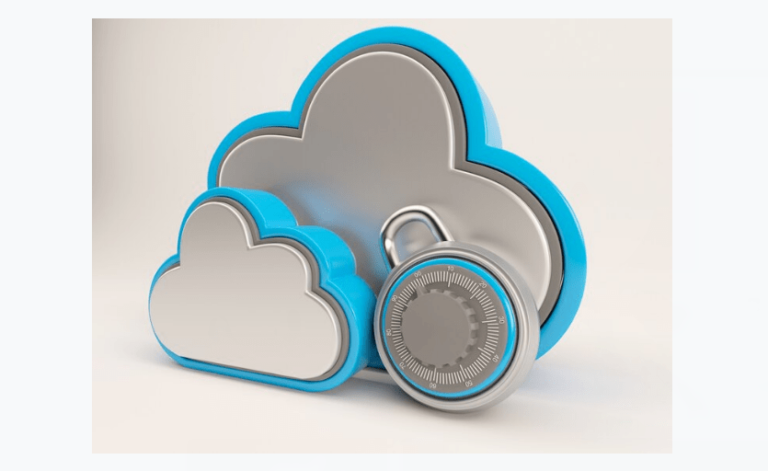Hybrid cloud storage orchestrates storage processing between on-premise and cloud resources, creating a single virtual storage infrastructure with centralized management. Software-defined storage (SDS) enables hybrid cloud storage vendors to decouple processing from storage assets.
Let’s take a closer look at the two major parts of the hybrid cloud storage architecture:
- On-premise storage. On-premise hybrid cloud storage components are usually appliances or gateways with cloud orchestration services. The advantage of maintaining local storage is to provide high IOPs and low latency for applications, regulatory compliance and risk management requirements.
- Public cloud storage. The public cloud offers extensive scalability and cost efficiencies for virtualized storage resources, and public clouds are engineered to provide failover services for disaster recovery.
Usage Cases For Hybrid Cloud Storage
Hybrid cloud storage is a relatively simple way to adopt cloud-based storage and services by integrating with the on-premise storage infrastructure. Top usage cases include distributed storage and management, growing and dynamic workloads, big data analytics, and data protection and disaster recovery.
- Distributed storage services. Most hybrid cloud storage products distribute storage processing by sharing cloud-based storage resources or by sharing files through the appliance or gateway. Centralized management enables IT to manage on-premise, ROBO and cloud storage as a single system.
- Dynamic workloads. Most businesses are dealing with a heavy onslaught of data, and many of them are also dealing with variable sizes and dynamic workloads. For example, as digital designs replaced blueprints, data quickly outpaced the traditional storage systems that companies planned to keep for years. Large and variably sized files are particularly good candidates for extensible storage like hybrid infrastructures. The cloud side of the infrastructure not only economically stores more data, but is also capable of cloud bursting to meet the demands of spiking performance.
- Big data analytics. Another use case is big data analytics and testing/development (test/dev) environments. In a typical example, a company decides to store its accumulated big data in the cloud. Engineers could run analytics directly from the cloud, or can retrieve portions for fast on-premise processing. Testing engineers can spin up instances of production environments in the cloud.
- Data protection and DR. Hybrid cloud storage can benefit data protection and DR with snapshot/replication and failover. Most companies who invest in hybrid cloud storage systems leverage the products’ native data protection and disaster recovery. Some vendors concentrate more on data protection than others, but they all offer some ability to do snapshots and replication whether on-premise or to the cloud. Many of them also offer failover in the cloud for improved disaster recovery.
Vendors
When you go vendor shopping, beware of vendors that say they are selling hybrid cloud solutions when all they’re doing is 1) simply hosting your storage in the cloud with no on-premise component, or 2) merely using the cloud as a backup tier. This is not hybrid cloud storage, which by definition orchestrates data between on-premise and cloud tiers to present a single virtualized infrastructure.
Also look for value and cost, extensibility, centralized management, application performance, data protection and disaster recovery, and security. In addition, make sure that the vendor does not require you to make changes to applications. Although there is a place for engineering applications for optimal cloud usage, you should not be required to do so to add a hybrid cloud storage solution.
Microsoft Azure StorSimple is a leading vendor in the field. More perhaps than any other hybrid cloud vendor, StorSimple closely integrates the cloud into storage operations. Recently, Microsoft added a Virtual Appliance feature, which extends appliance capabilities to remote offices without investing in additional physical appliances.
IBM does not offer a single hybrid cloud storage product, but does orchestrate some of its storage products through SoftLayer to provide a hybrid storage environment.
Amazon’s AWS Storage Gateway also offers some hybrid functionality with on-premise caching and support for on-site applications.
EMC offers its CloudArray appliance and Enterprise Hybrid Cloud architecture. However, the fate of EMC’s product lines is up in the air following the Dell acquisition. Dell may invest in EMCs hybrid cloud solutions as it lacks its own well developed platform. But we do not expect many people to invest in EMC hybrid cloud architectures until its roadmap becomes much more clear.
Some gateway product providers have also developed hybrid cloud storage. Avere’s FXT Edge filers are physical or virtual servers that address cloud storage as NAS, and they can present both on-premise and cloud files as a single storage system. CTERA’s Cloud Storage Gateway enables file sharing using the cloud, centrally manages replication and backup to the cloud, and mounts a virtual cloud drive. And Nasuni’s on-premise filers enable file and snapshot movement, and centralize management between on-premise and cloud.
The majority of cloud storage is still cold data, specifically off-site backup and archiving. It makes economic sense to store aging data on the cloud, and limited bandwidth and restore times are not a big challenge for cold data. However, hybrid cloud storage lets IT take advantage of new usage cases by using the cloud as much more than a static repository. Hybrid cloud architecture lets you take advantage of both worlds, while smoothing the way for a strategic move to the cloud.





